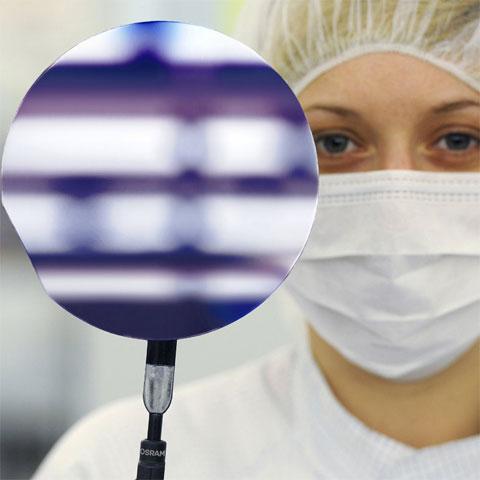LEDs Revolutionised by Galium Nitride Semiconductor
Many different types of light fixtures use LEDs. Incredibly versatile by nature, light-emitting diodes produce their light when the electrons move through the semiconductor material. Unsurprisingly, because of their versatility, the last few years have seen thousands of homes switch to LED lights. However, although LED lights have several qualities that make them the perfect light for certain situations, they also suffer from a number of limitations. Due to this, the search for brighter, clearer LEDs has gone on, and now there could be a device that has solved these issues. Here, we will look at the problems that are associated with LEDs and suggest how the search for brighter LEDs may be coming to a close.
The Problems Associated With LEDs
Sadly, the limitations of LEDs put many people off the idea of using them as a lighting source. All light sources have their positive and negative attributes. With LEDs, however, such problems seem to be more noted.
Over their lifespan, badly designed LEDs can begin to flicker, change colour, dim or provide uneven light. Of course, all of these issues can easily be overcome by choosing LEDs with an Energy Star Rating. Such a rating should guarantee quality, with each product having to prove its output and brightness over an extended period of time. As well as this, it must also demonstrate colour quality, efficiency, instantaneous lighting and an absence of flickering.
Revolutionising LEDs
Seeing as though we’ve already seen how many of the drawbacks associated with LEDs can be overcome, we should also consider the positives such as their durability and their energy saving ability. However, in addition to this, recent research by leading engineers and researchers promises to revolutionise LED lamps, making them much more commercially viable, brighter and more compact.
The researchers believe that a gallium nitride semiconductor would be the key to making all of this possible, with the resulting product potentially revolutionising LED lighting, eliminating many of the drawbacks. At present, many people are unwilling to opt for LED lighting because they are incredibly sensitive to any spike in power. It is felt that, by using a gallium nitride substrate, power could be supplied at all times and the LEDs would be less vulnerable to these spikes.
The research into the possibilities of including a gallium nitride conductor was undertaken by the Fraunhofer Institute for Applied Solid State Physics IAF, and group manager Michael Kunzer was highly optimistic about the group’s findings, stating that: “This driver, which takes the alternating current from the grid and converts it into direct current with a reduced voltage, has a profound influence on the light yield and lifetime of the LED lamp as a whole.”
Concluding the study, the researchers found that drivers developed using this new semiconductor material were extremely robust, with components operating at higher currents, voltages and temperatures than standard silicon transistors.
What’s more, the efficiency factor was also improved further, with efficiency reaching 86%; a figure that is around 3% higher than the silicon equivalent.

